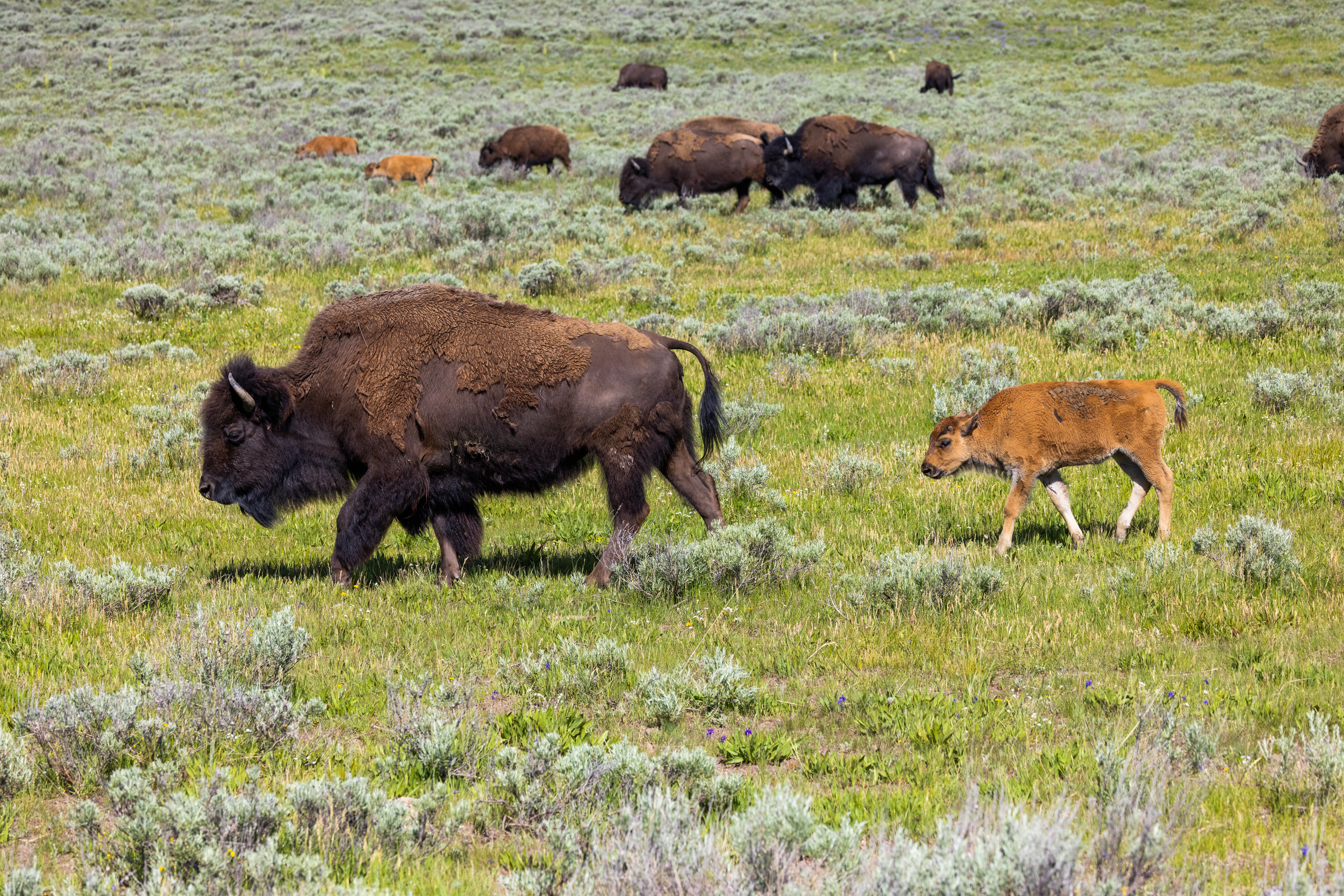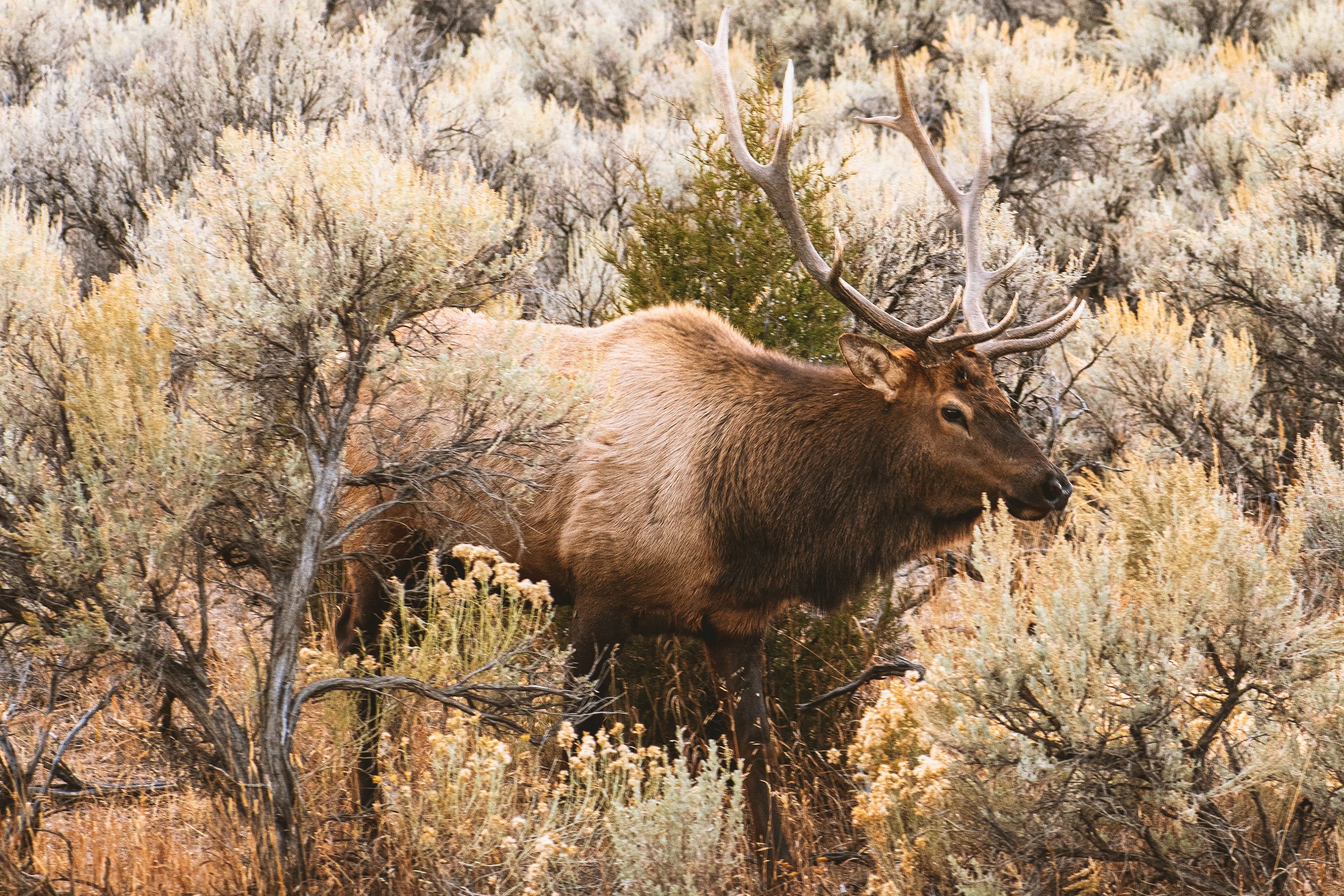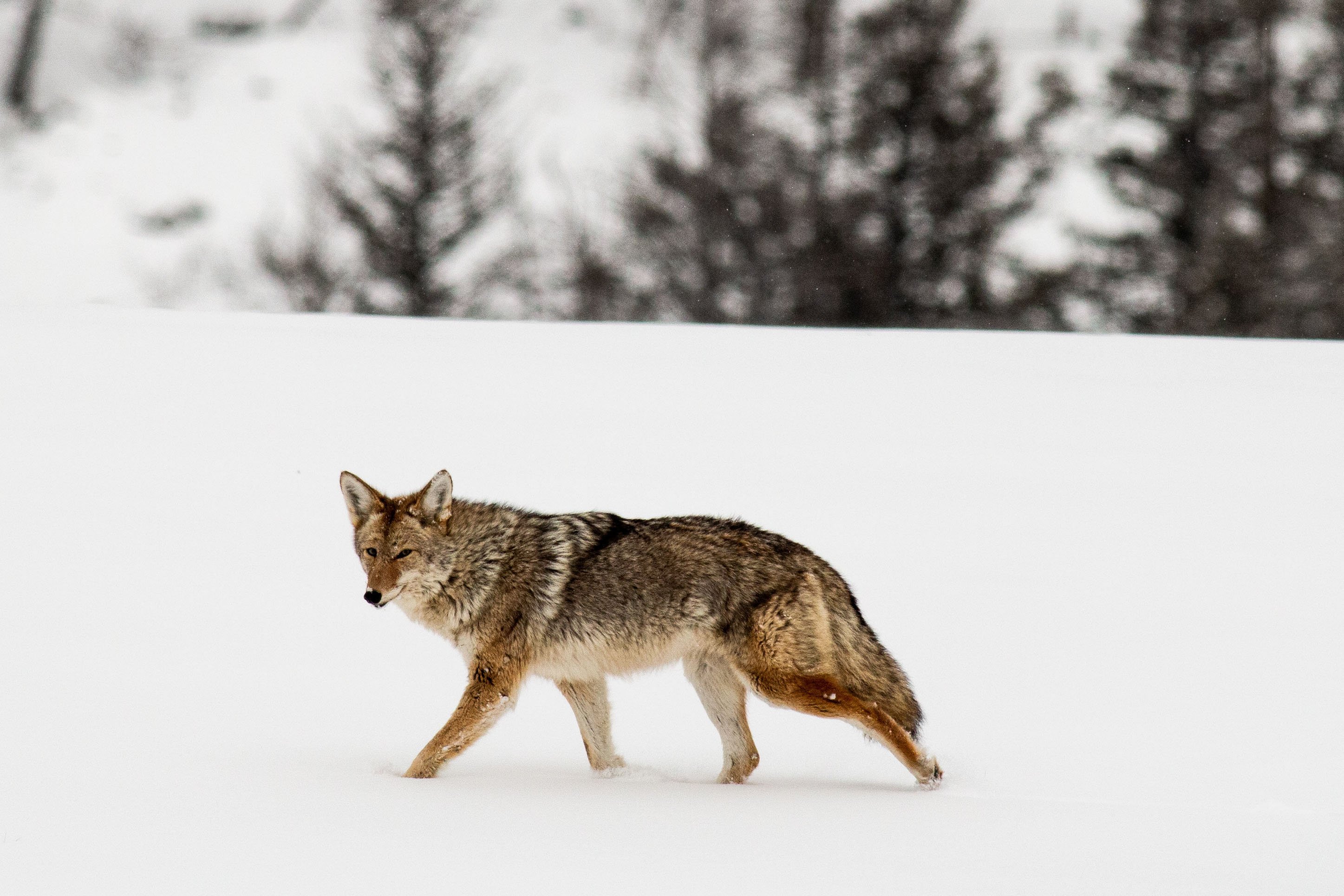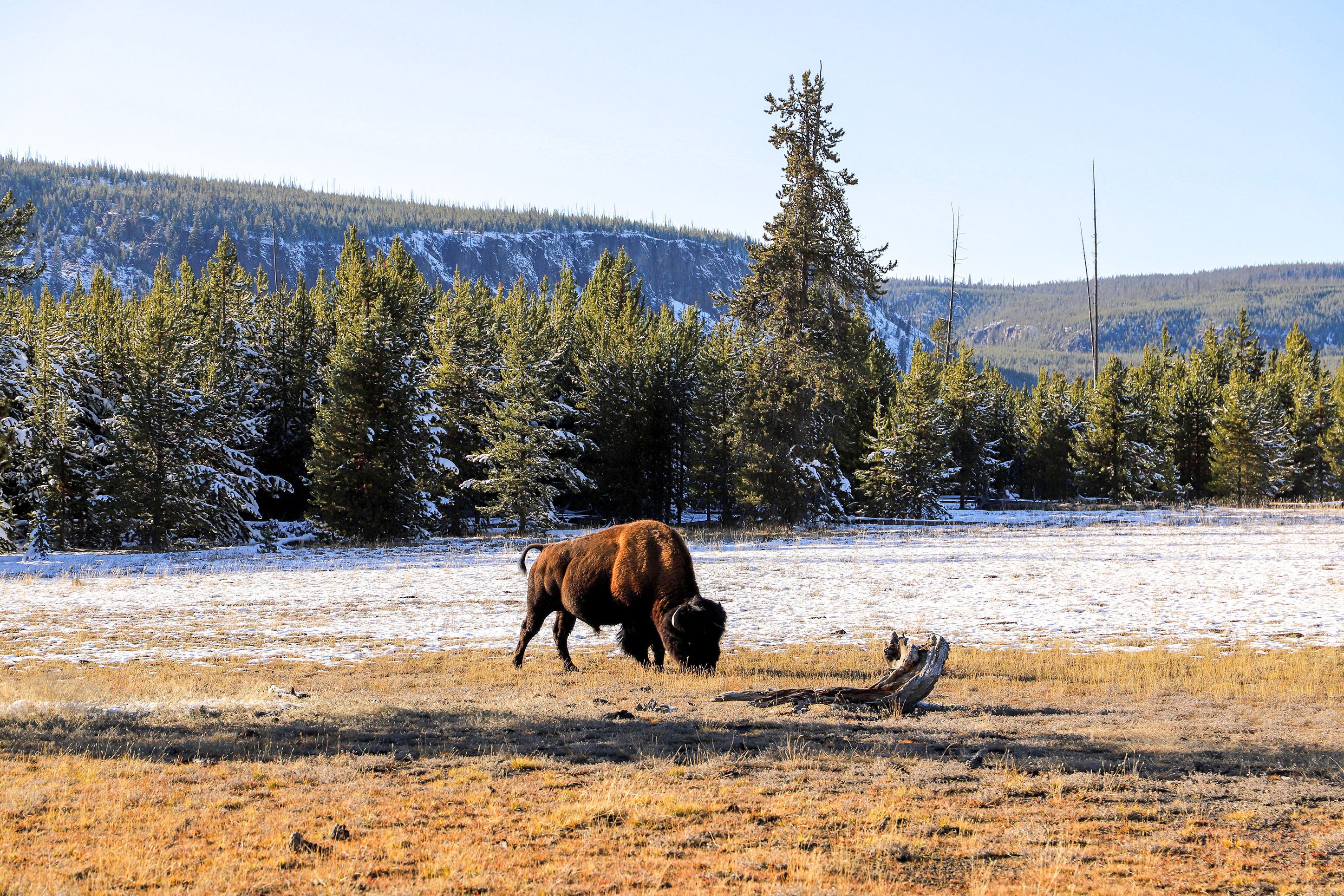Watching Wildlife in Yellowstone National Park
Yellowstone National Park is home to abundant wildlife. Its varied habitats — including grasslands, alpine forests, and geothermal areas — support an abundance of creatures both big and small.
Within Yellowstone's 3,472 square miles, visitors have the chance to spot iconic American animals like grizzly bears, black bears, wolves, bison, elk, and pronghorn antelope roaming freely. In the winter, you might even spot the elusive wolf since it's easier to spot them against a white snowy backdrop.
If you come to watch the wildlife in Yellowstone National Park, you won't be disappointed —especially if you know when and where to look. e
Jump to:
Planning a trip to Yellowstone? Subscribe to our blog to get free travel tips.
When Is the Best Time to View Wildlife in Yellowstone National Park?
Generally, the best time of day for wildlife viewing is early morning or evening, when the animals are moving about and eating. You can watch wildlife in Yellowstone National Park throughout the entire year, but if you're looking for specific animals, here's a seasonal guide to follow:

Spring (March - May)
Spring is a great time to go wildlife-watching in Yellowstone. Bears and their cubs emerge from hibernation, as well as newborn bison, elk, and pronghorn calves. Beginning in March, you can typically spot bears grazing in the roadside meadows until warmer temperatures push them to higher elevations.
In April, bison begin calving in the Lamar Valley. These little calves, called Red Dogs for their reddish coats, are adorable as they get their bearings and follow their mamas around on their young, wobbly legs. Black and grizzly bears can still be seen, and the bull elk antlers are in velvet.
In May, moose and pronghorn calving begin, and the wolf pups emerge from the den. Keep in mind that shoulder season weather can be unpredictable, with a mix of snow, rain, and mild sunny days.
Be bear aware in spring: The National Park Service has established Bear Management Areas with a high density of elk and bison carcasses and lots of bear activity. These areas restrict certain activities and can include such measures as area closures, trail closures, a minimum group size of four or more, day-use only, or no off-trail travel. Be aware of current restrictions for your safety and the well-being of the bears, who are busy eating after the long winter.
Summer (June - August)
The busy Yellowstone summer tourist season coincides with the most active time for many of Yellowstone's mammals and birds. Visitors have excellent chances of seeing bears, wolves, bison, elk, and a variety of waterfowl.
The warmer months of July and August bring the bison rut. While the mating season isn't a spectator sport, watching the bulls battle with one another is quite something. (Always stay in your car — these sparring animals have immense strength and are wild animals.)
You'll also find resident elk populations lounging around Mammoth Hot Springs. They may seem docile, but they aren't tame, so please leave them alone and never try to feed them.

Fall (September - October)
As tourist crowds diminish, the Yellowstone fall season brings spectacular autumn foliage and cooler temperatures that encourage animals to be more active during the daylight hours.
In September and October, the elk rut begins, and the bull elk often battle over the females. Black and grizzly bears return to the roadside meadows in preparation for hibernation, and the raptors begin to migrate.
Winter (November - Feburary)
Winter in Yellowstone is idyllic. While visitation drops dramatically, hardy winter travelers are rewarded with opportunities to spot wolves, foxes, bald eagles, and herds of bison and elk in the snow-covered landscapes.
November and December are marked by the bighorn sheep rut, but these animals are a bit more elusive as they can manage steep, rocky terrain and are rarely spotted in lower elevations. So watch along the slopes and rock cliffs when looking for them.

Where to View Wildlife in Yellowstone National Park
North Entrance
If you're coming from the North or Northeast Entrance, staying in Gardiner or Cooke City makes getting in and out of the Park easy without a lot of drive time.
Some popular wildlife-watching spots in North Yellowstone include:
-
Mammoth Hot Springs: Excellent for spotting elk, bison, and often bears
-
Blacktail Deer Plateau: Known for large herds of pronghorn antelope
-
Lamar Valley: One of the best places to view wolves, grizzly bears, bison, and a variety of raptors
East Entrance
If you're coming from the East, the closest major town is Cody, WY, which is a little over an hour drive from the Park.
Some popular wildlife-watching spots in East Yellowstone include:
-
Hayden Valley: A premier destination for seeing bison, bears, wolves, and waterfowl
-
Yellowstone Lake Area: Good for spotting ospreys, bald eagles, and otters
-
Mud Volcano Area: Offers opportunities to view bears, elk, and bison amidst geothermal activity
South Entrance
If you're coming to Yellowstone through the South Entrance, Jackson, WY, could be a great place to stay with no shortage of things to do in its historic downtown.
Some popular wildlife-watching spots in South Yellowstone include:
-
Yellowstone River Corridor: Productive for spotting bison, elk, and waterfowl along the Yellowstone River
-
Lewis River Channel: One of the premier destinations in Yellowstone for viewing bison, bears, wolves, and a variety of birds
-
Riddle Lake: This backcountry lake is a reliable spot to glimpse otters and the elusive wolverine
West Entrance
If you're coming to the Park through the West Entrance, consider staying in West Yellowstone, MT — it's right next to the Park and includes several accommodations.
Some popular wildlife-watching spots in West Yellowstone include:
-
Firehole River/Madison Junction: Thermal areas where bison, elk, and bears frequently congregate
-
Old Faithful Area: Popular for viewing bison, bears, and a variety of birds (not to mention geysers!)
-
Norris Geyser Basin: Excellent for spotting bears feeding on spawning trout in streams
Enjoy Watching Wildlife in Yellowstone National Park
Enjoy watching wildlife in the Park, but remember — it's illegal to willfully remain near or approach wildlife, including birds, within any distance that disturbs or displaces the animals. So, for your safety, always stay at least 100 yards (91 meters) from bears and wolves (think almost the distance of a football field) and 25 yards (23 meters) from all other wildlife.
If you enjoyed this blog, take a look at some of our other related articles:
In our never-ending quest to keep up with all things new in Bozeman, we have been producing content for years and can't possibly update every blog when new businesses open or existing businesses close. Please reference the publish date and do your own due diligence when making plans.


